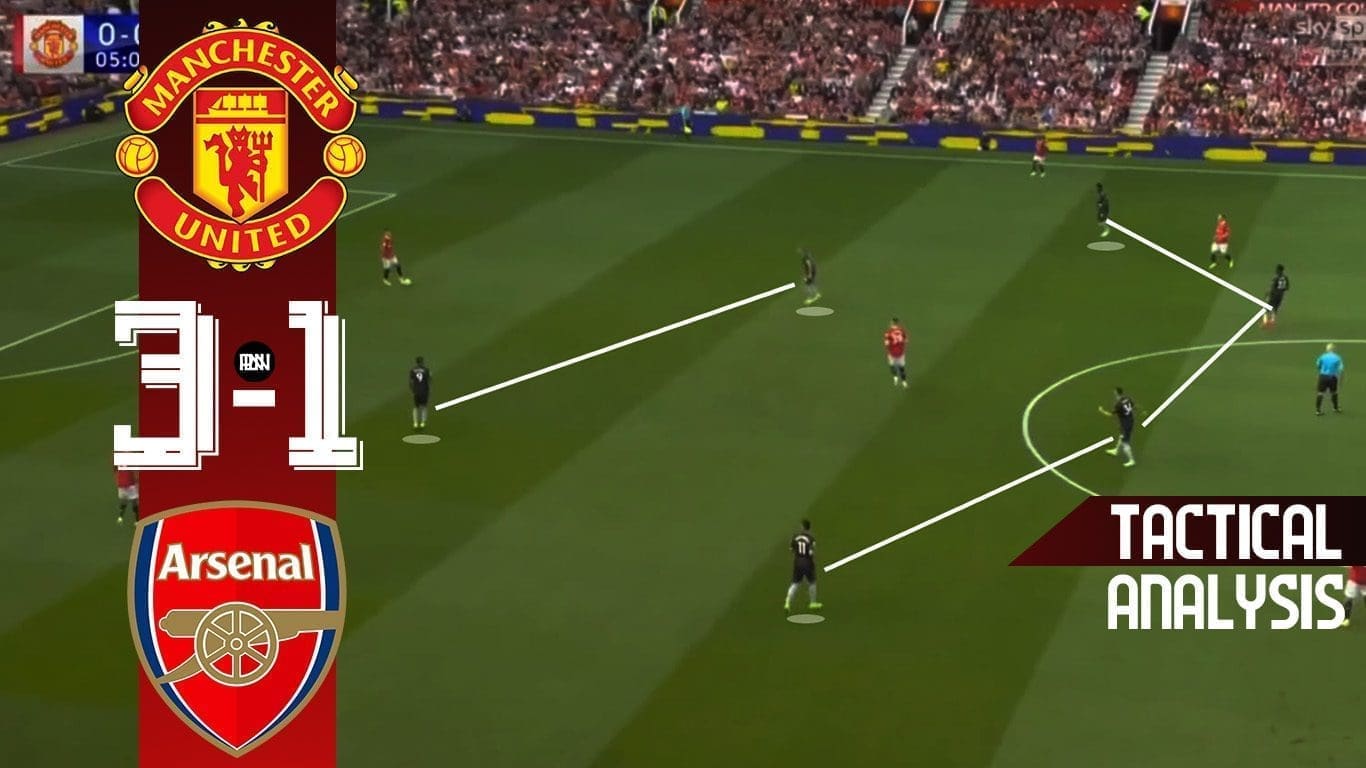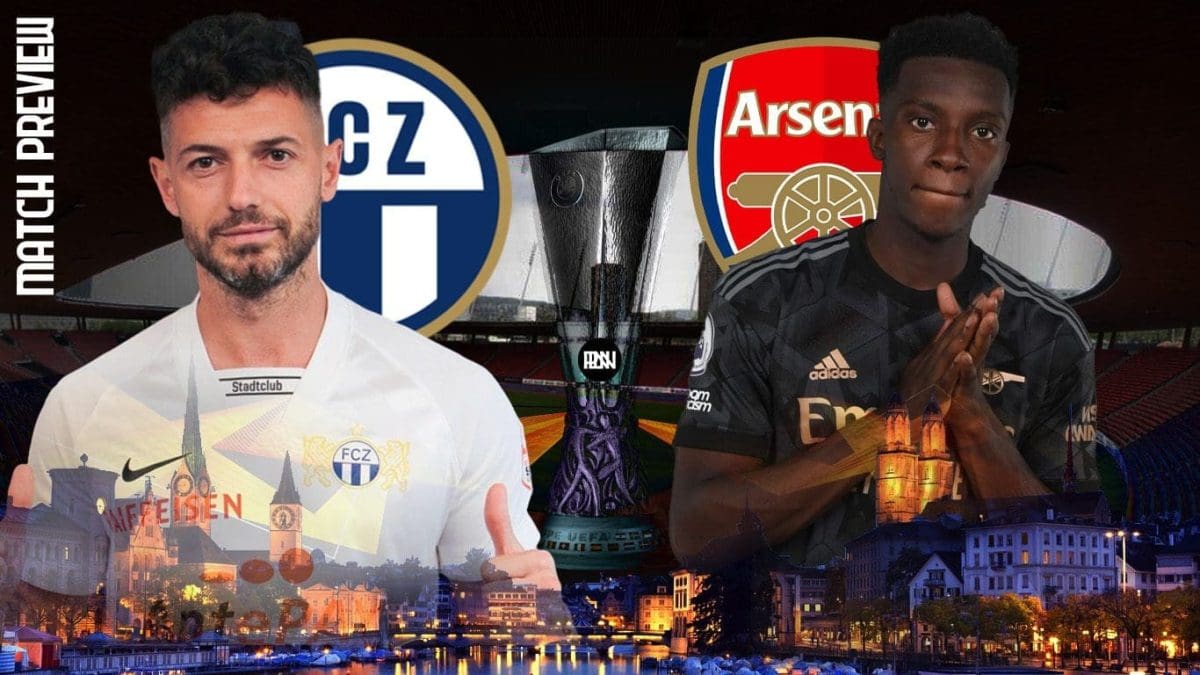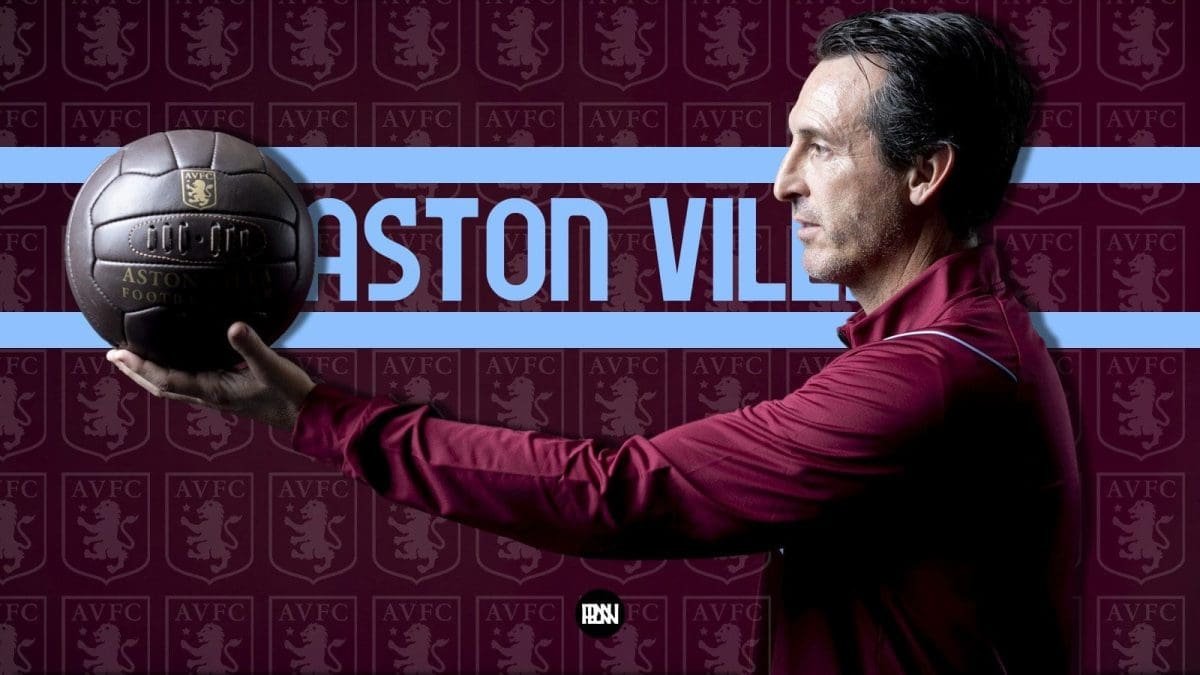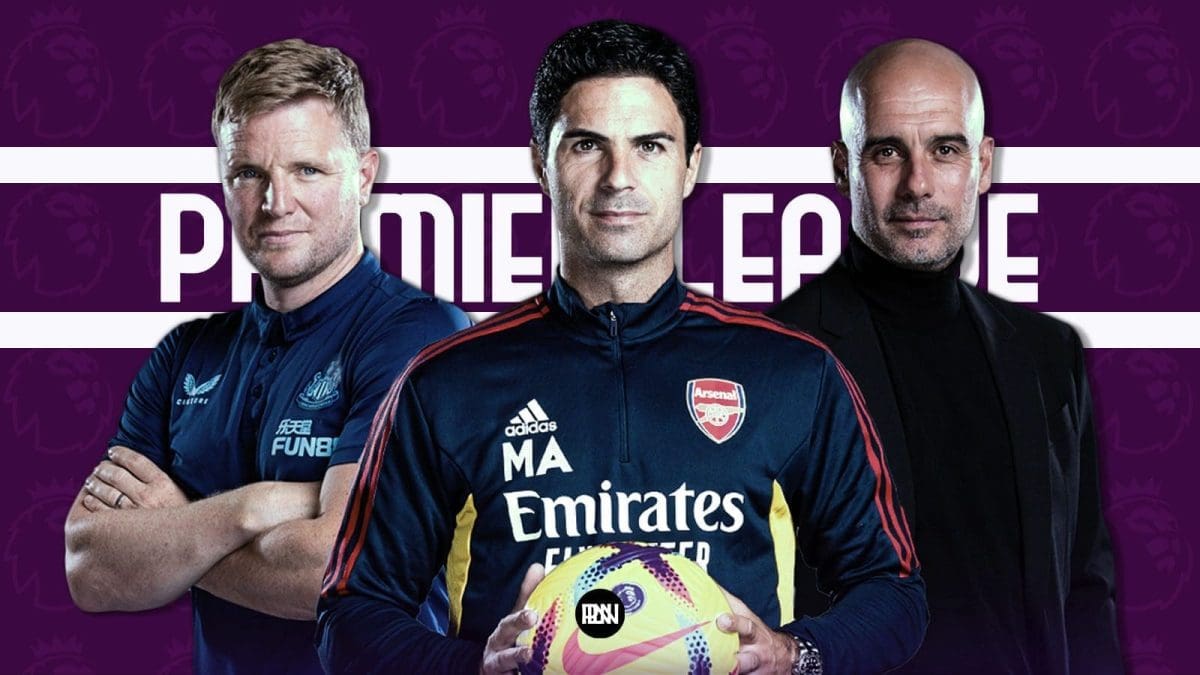Manchester United against Arsenal had everything like one would expect. A high-intensity game from the start with some world-class buildup play and goals, sprinkled with a pinch of refereeing controversies. Erik ten Hag’s start at Manchester did not go according to plan, but his team have bounced back with four wins on a trot. This has undoubtedly created a sense of positivity among the United faithful who are finally hoping to see light at the end of the tunnel.
For Arsenal, however, the winning streak comes to an end. Mikel Arteta’s side were themselves flying high with a perfect start to the season. Although they are still on top of the pile with six games completed, this defeat comes as a wakeup call. The game, meanwhile, was equally balanced on paper and the pitch, so how did ten Hag get the better of Arteta and Arsenal?
The Lineups
Ten Hag named Cristiano Ronaldo on the bench for the fourth game running, along with the new signing Casemiro. Christian Eriksen and Scott McTominay started as a double pivot, with Marcus Rashford leading the line upfront. The back four comprising of Lisandro Martinez. Raphael Varane, Diogo Dalot, and Tyrell Malacia have been forming a good partnership, and they continued once again.
Meanwhile, Arsenal have both their defensive midfielders – Mohamed Elneny and Thomas Partey sidelined. So, Sambi Lokonga, who impressed against Aston Villa, was named in the 11. Olex Zinchenko suffered an injury that kept him out for a couple of games but returned to the team against United.

The 1st Half – United’s well-organized structure in and out of possession
Arsenal started in a 3-2 shape in the first phase, with White usually deeper than Zinchenko. Their left back – Zinchenko also rotated with Xhaka (as seen in the image). Scott McTominay playing in a double pivot would usually get tight to the central midfielder while Eriksen remained deeper. Meanwhile, Rashford was tasked with cutting the passing lanes to Xhaka while Sancho and Antony remained narrow. United usually did not look to press Ramsdale, but the trigger was when the ball moved to one of the center halves.

Ten Hag, meanwhile, resorted to a 3-1 structure in possession with Malacia usually dropping off as a third center half and McTominay usually playing as a defensive midfielder. Eriksen was free to roam to the left side to aid the buildup; Dalot was wide, while Antony tucked inside. The Gunners looked to press high, but they were caught out multiple times as the front two were not in cohesion.
In the below example, Martinez was able to find McTominay with ease, as Jesus and Odegaard left a vast gap in the middle. As a result of Eriksen moving higher up the pitch, Lokonga was dragged alongside him, while Xhaka had to mark Bruno Fernandes on the other side. This meant that Rashford dropped between the lines and had the time to turn and pick a pass out wide.
Dragging Lokonga to one side played a huge role in opening up the space between the lines and with Martinez’s ability on the ball, United were able to carve open Arsenal in the early part of the game.
Moreover, Arsenal’s wingers also failed to block the passing lane centrally in a settled block. Here, Lokonga points out to Saka to close the lane to Fernandes, but Saka is caught on his heels. Martinez once again perfectly threads it through to the Portuguese, who then turns and has options ahead of him.

And this is how Antony’s opening goal happened. Eriksen used all his experience and cleverly attracts Lokonga. Bruno Fernandes – given the free role to drift in between the lines, once again finds space, with Martinelli on his heels failing to block the passing lane.

The former Spurs man aligns his body well and finds a pass to his teammate. From there, Arsenal are exposed as it takes 5 of their players out of the game. Gabriel commits to a challenge, and with some neat, intricate play, Antony scores on his debut.
In possession, Arsenal struggled to create much due to United’s compact midfield (something which Arsenal lacked). However, Ramsdale’s passing range was excellent throughout the game and he constantly looked to pick out White – the free man wide as Sancho looked to close down the angles.
Arsenal also formed a 2-3 structure with Zinchenko inverting and Xhaka usually moving wider from half spaces to create a 5v4 overload when United settled in a block. In this passage of play, as Lokonga goes wider – dragging Bruno, Xhaka takes his place centrally and advances the play. Zinchenko inverting meant that Martinelli was isolated against Dalot, but Arsenal struggled to find passes to him partly down to United closing down spaces quickly.
The 2nd half – Arsenal bounce back, but Manchester United kill the game in transition
In the second half, Arteta changed his setup slightly to adapt to United’s shape off the ball and it unquestionably worked well. United also dropped their intensity as they were leading and dropped deeper. Ben White, who was wider in the first half, regularly played as the 3rd center half. From central positions, Odegaard also moved wider, which created a dilemma for Eriksen on whether to press Lokonga (receiving the ball) or track Odegaard.
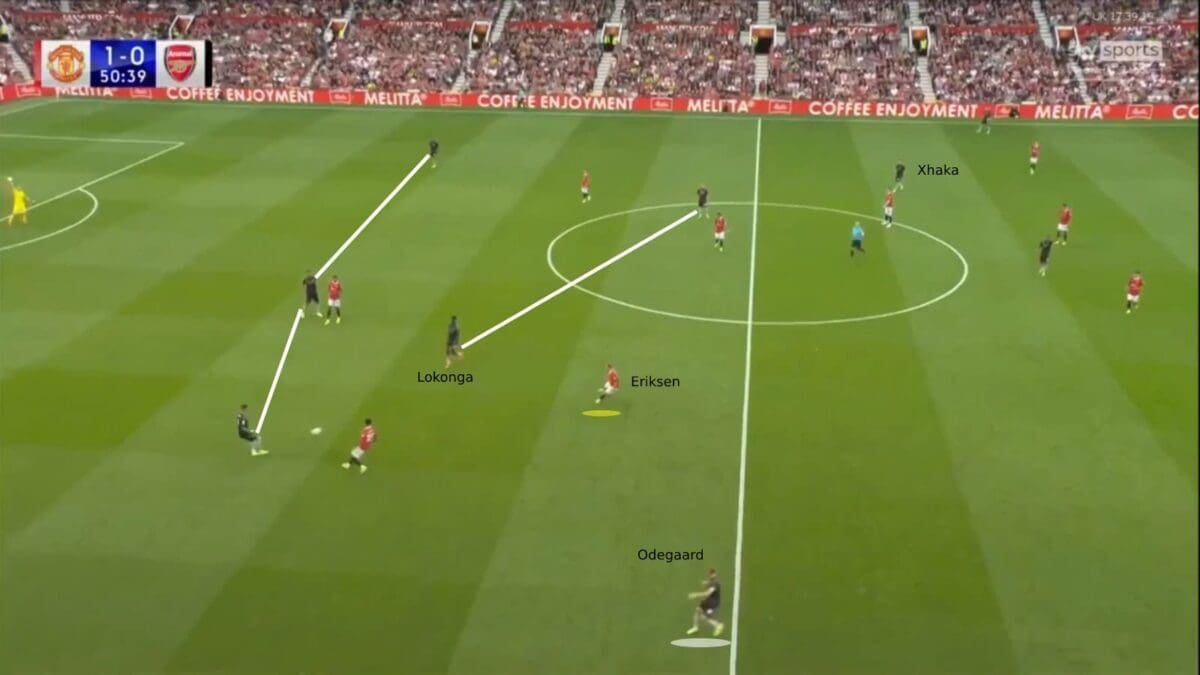
Eriksen decides to let Lokonga turn and Xhaka – playing as a number 8 in the half spaces held the attention of Dalot, which meant that Martinelli was free on the left. The winger regularly had 1v1 situations against Dalot in the second half and got the better of him.
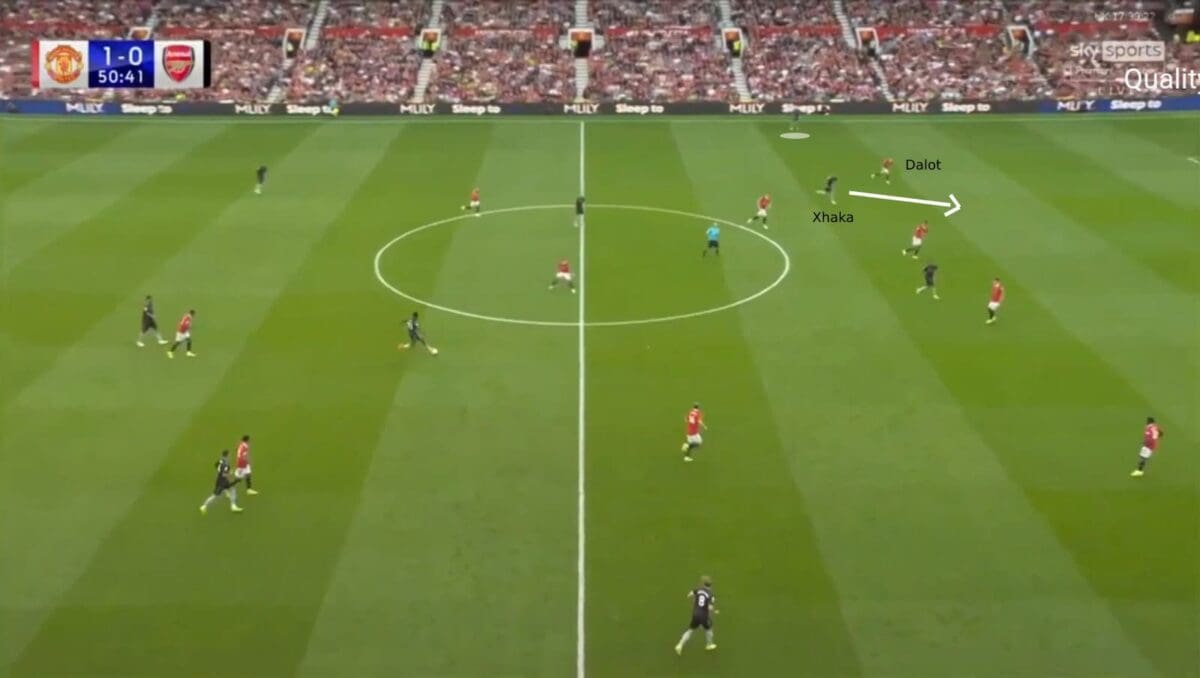
With Odegaard and Xhaka playing very high up the pitch, Zinchenko (inverted fullback) and Lokonga were able to receive the ball in space and control the tempo of the game. Arsenal pressed for the equalizer, and it arrived around the 60th minute. Eriksen makes a run to create space, but Varane misplaces the pass. This creates an enormous gap centrally left by the Dane.
Odegaard receives the ball in space and with Varane out of position, the ball kindly falls to Saka, who slots it in an empty net to make it 1-1. A thoroughly deserved lead for Arsenal as they dominated proceedings in the second half.
Arsenal had all the momentum and started pushing for the winner. However, they were once again guilty of letting Fernandes drop between the lines as Lokonga was caught out of position. He timed the through ball to perfection and Rashford – from the left side makes an incredible run to score. The goal was against a run of play, but it reminded Arteta’s side of the threat United pose in transition.
Following this, Arteta bought Fabio Vieira, Emile Smith Rowe, and Eddie Nketiah for Zinchenko, Odegaard, and Lokonga. Arsenal moved to a 3-1-4-2 shape as Arteta threw the kitchen sink to find the equalizer. United also had reinforcements with Fred coming in for Sancho and Ronaldo on for Antony. Once they scored the second, Ten Hag shifted to a 4-3-3/4-5-1 shape out of possession.

Arteta’s move was bold, but it ultimately backfired. The Gunners were exposed at the back and were all over the place. Their wing backs failed to track runners, the center backs were stretched, and as a result, United scored their third just a couple of minutes after the change. From there, the Red Devils shored up their defense and managed to win the game.
Conclusion
Arteta would have been disappointed with the result. However, Arsenal showed their potential in large parts of the game with control. They also moved their opponents well and maintained sustained pressure, especially in the second half of the game. With that said, the Spanish manager’s changes were arguably a poor choice as his team had the momentum and created numerical superiority until the 2nd goal.
For Manchester United, the outcome was richly deserved. Erik ten Hag’s era is starting to take shape and the United faithful will be confident as the season progresses. Although they did struggle in some moments of the game, the blueprint was laid and executed flawlessly. While the players also deserve credit, the manager’s decision to play to his team’s strengths should be the standout feature. Ten Hag’s capacity to be flexible and adapt according to the opponents will continue to pay dividends.


